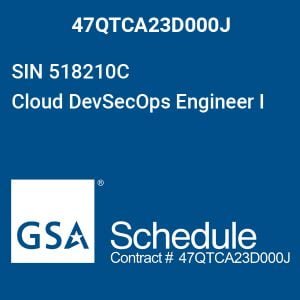AWS VPC: AWS is the number 1 globally used cloud service that offers more than 200 highly customizable features available from data centers around the world. It has become the top choice among government agencies, businesses, organizations, and startups as it helps drive innovation, improve agility, and minimizes operating expenses.
What is VPC?
VPC is an acronym for Virtual Private Cloud, and it allows you to launch AWS services through a predefined VPN connection. This network model strongly matches a traditional network that you would run in your own computer system, but with the added bonus of utilizing AWS’s scalable architecture.
Ever since its conception, the AWS Virtual Private Cloud has served as the exemplification of privacy and security for consumers looking to operate their programs in a secure, private, controlled, and separate environment.
This private virtual platform has advanced, and with it, the possibilities for consumers to maintain, manage and create architectural environments with various control points for direct connections to the on-premises enterprise.
Unlock the future of intelligent applications with our cutting-edge Generative AI integration services!
AWS VPC Design and Implementation
In order for the AWS VPC to be a successful cloud service for you, you must first measure your current success and define what your organization’s success would look like after the AWS cloud adoption scales and develops. Essentially, your virtual private cloud should be tailored to meet the requirements of the apps currently in use while also being scalable to meet future demands.
Once you have constructed your VPC, you start dividing it into subnetworks. Subnets are essentially units designed for tracking guidelines. They are not isolated limits around your apps.
Isolation is obtained by adding an AWS Security Group to the Cloud infrastructure hosting your application. Because SGs are domain-specific firewalls, communications are monitored to make sure that traffic inflow is permitted. They direct traffic to the access points connected to an Exchange server, both outbound and inbound. These must be securely designed, with only necessary access granted.
It is a recommended approach to develop subnetworks in classifications. There are two categories of subnetworks: public and private.
Public Subnets
Public subnets are linked to a routing process, which includes a default gateway to the Web via an Internet connection. It is recommended that public subnets be used as an external resource base.
Private Subnets
A private subnet is a private network that can’t be accessed through the internet directly. It has a different architecture than that of a public subnet and uses a private IP address.
The architecture inside a private network accesses consumers and resources via NAT infrastructure over the internet.
AWS locally offers NAT functionality via the NAT Gateway provider. Consumers can also manage their own NAT data points or use external NAT equipment from the Aws Cloud. Private subnets are suitable for accessing private resources.
-
 GSA HACS Principal Security Architect$153.15
GSA HACS Principal Security Architect$153.15 -
 GSA IT Consultant$81.12
GSA IT Consultant$81.12 -
 GSA Cloud DevSecOps Engineer I$71.79
GSA Cloud DevSecOps Engineer I$71.79
Build VPC Using Quick Start
Quick Start offers you an easy and automatic way to deploy innovative AWS technologies in accordance with AWS quality standards and helps you decrease numerous manual processes to a few steps, allowing you to create and utilize your workspace in minutes.
Using Quick Start to create a virtual private cloud environment will give you access to several AWS features.
Four access zones are available to provide for greater scalability and disaster recovery. Availability/Access Zones are decentralized throughout a zone and are dispersed to provide the ideal protection and consistency in case of a catastrophe. It is recommended that you use Availability Zones as much as possible to disconnect a network infrastructure shutdown.
Apps held on instances inside a private subnet may have varying access requirements. A few necessitate Internet connectivity, while others connect directly to on-premises database systems, apps, and clients. Aws offers two options for this type of network; The Transit Gateway and the Virtual Gateway.
The virtual gateway supports only one VPC at a time, while the transit gateway is designed to optimize the interconnection of up to hundreds of VPCs before grouping their interconnection to on-premises materials.
To regulate outbound and inbound traffic at the subnetworks, it is advised to utilize network ACLs (access control lists) as firewalls.
The AWS Quick Start helps to build an ACL-protected network subnet within every network segment. As a secondary layer of protection, these network ACLs focus on providing individual controls that can be customized.
To regulate the traffic flow outside and within the VPC, separate route optimization graphs are designed for each private subnet. Even though they use the same online connection as their primary pathway to the Web, the public subnetworks share a common routing path.
Rather than using NAT instances, use highly scalable NAT portals. NAT gateways provide significant benefits in terms of implementation, accessibility, and management. Allow for the inclusion of extra subnetworks to sustain your environment as it expands or evolves over time.
Conclusion for AWS VPC
Deploying a VPC environment has several benefits, including the ease of setting it up, along with advanced security options that help filter outbound and inbound traffic. Additionally, the best feature is its ability to scale and advance alongside your business while saving you lots of money.
For more information regarding AWS VPC, get in touch with experts at Cloud Computing Technologies who will guide you and help you in making the most suitable VPC design for your ecommerce business and assist you in implementing it.
Further blogs within this Amazon AWS VPC Design and Implementation category.




